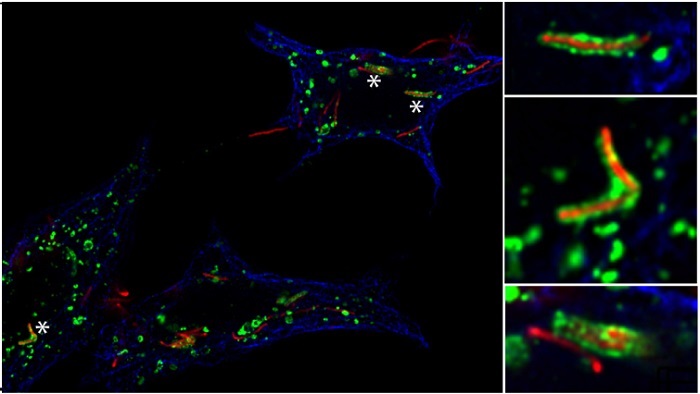Oregon Tuberculosis Research Lab (OTBRL)
It has been known since the late 1800's that Mycobacterium tuberculosis (Mtb) causes Tuberculosis (TB). Additionally, curative regimens for this disease have been available for more than fifty years. In spite of these advances, TB remains a leading cause of infectious disease morbidity worldwide, causing an estimated 1.5 million deaths annually. Why, then, has this pathogen been so difficult to eradicate? The answer likely rests in the mechanisms by which Mtb has evolved to co-exist with its human host.
Unlike most bacteria, Mtb is able to hide inside human cells, sometimes for extended periods of time. Furthermore, it is commonly believed that nearly a quarter of the world's population has been infected with Mtb, and yet very few of these go on to get sick. The Oregon TB Research Laboratories (OTBRL) represent a consortium of investigators seeking to understand the mechanisms by which Mtb and the human host have co-evolved, and seeks to answer many of the questions underlying this relationship that we believe will ultimately lead to improved diagnostics, treatments, and vaccines. Examples of these questions include:
- Among those exposed to Mtb, who is really infected?
- Among those who are infected, who is likely to develop disease?
- How does Mtb survive inside of cells?
- Why are children exposed to Mtb more likely to become ill than adults?
- How does the immune system find those cells containing Mtb?
- What are the mechanisms associated with a successful vaccine?
OTBRL has brought together investigators in Oregon who share a common purpose of understanding the relationship between Mtb and the human immune system that will lead to improved diagnostics, treatments and vaccines.
In addition, members of the OTBRL are actively collaborating with groups in the United States as well as in several countries, including South Africa and Uganda.
Investigators
David Lewinsohn, M.D., Ph.D., Professor of Medicine (Pulmonary and Critical Care Medicine)
Deborah Lewinsohn, M.D., Professor of Medicine (Department of Pediatrics)
Melanie Harriff, Ph.D., Associate Professor (Pulmonary and Critical Care Medicine)
Elly Karamooz, M.D., Assistant Professor (Pulmonary and Critical Care Medicine)
Georgiana Purdy, Ph.D., Professor (Molecular Microbiology and Immunology)
Christina Lancioni, M.D., Associate Professor (Department of Pediatrics)
Kimberly Beatty, Ph.D., Associate Professor (Department of Physiology and Pharmacology)
Fikadu Tafesse, Ph.D., Assistant Professor (Department of Molecular Microbiology & Immunology)
Louis Picker, Ph.D., Professor (Vaccine and Gene Therapy Institute)
